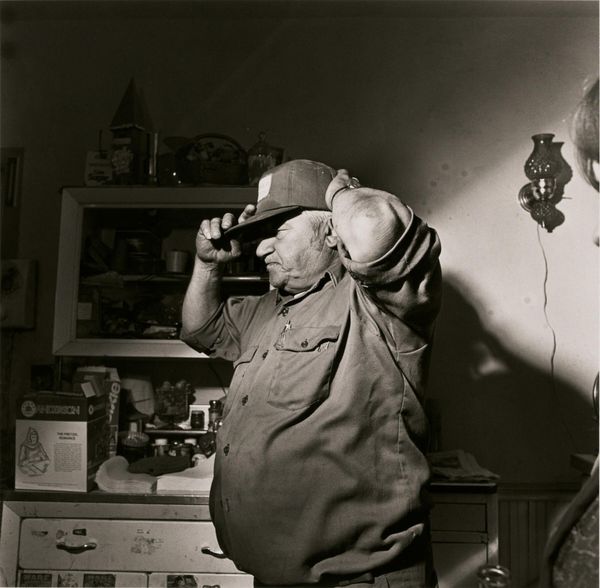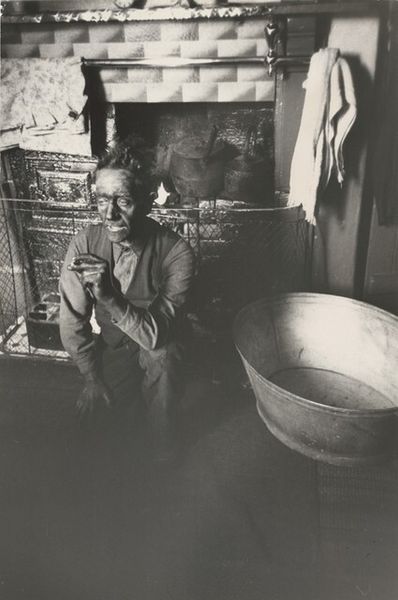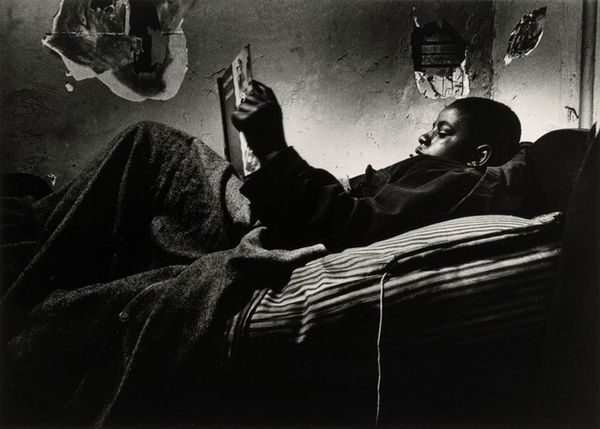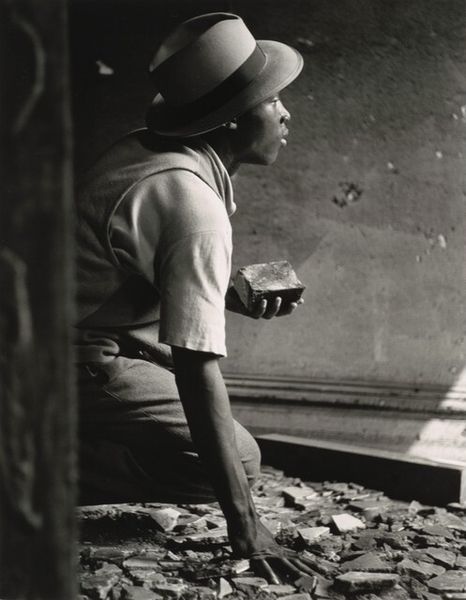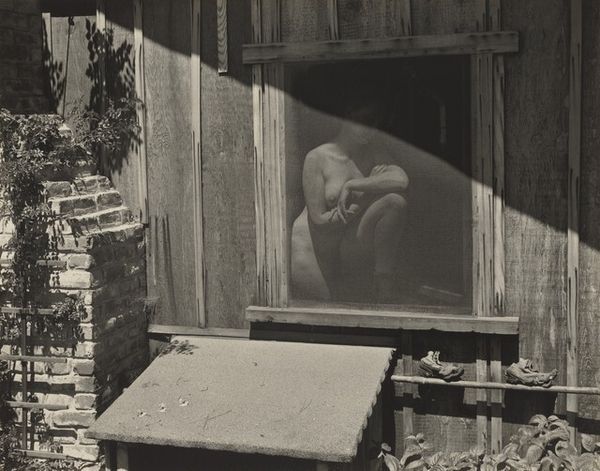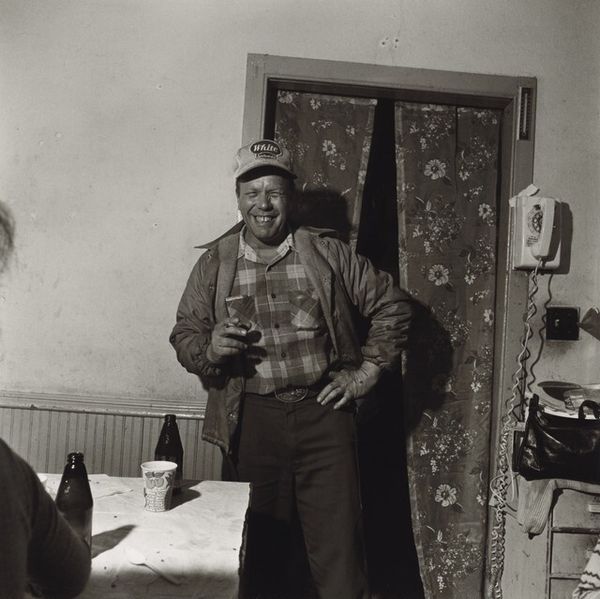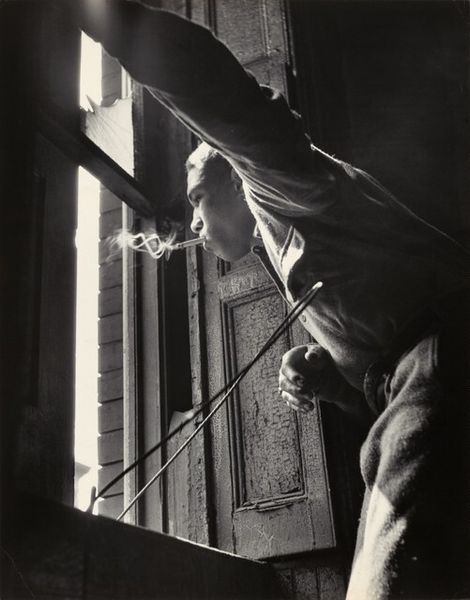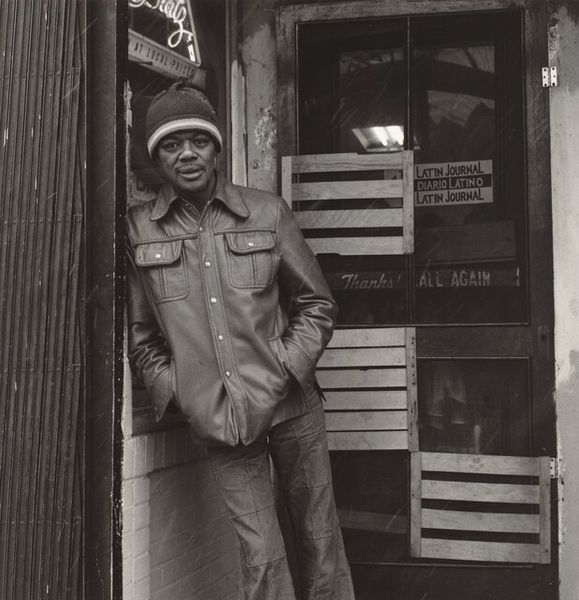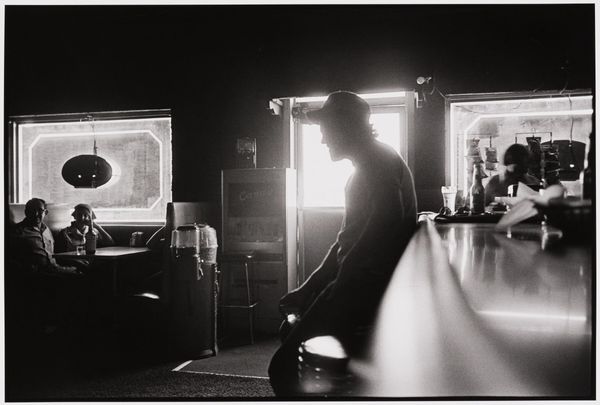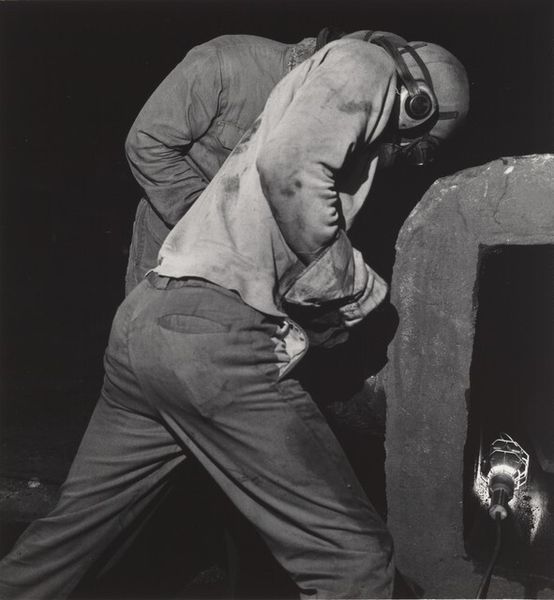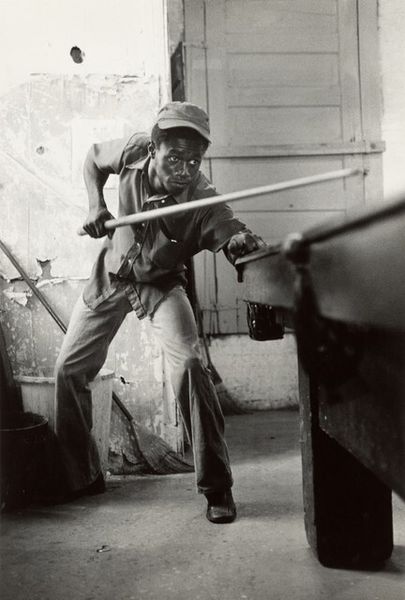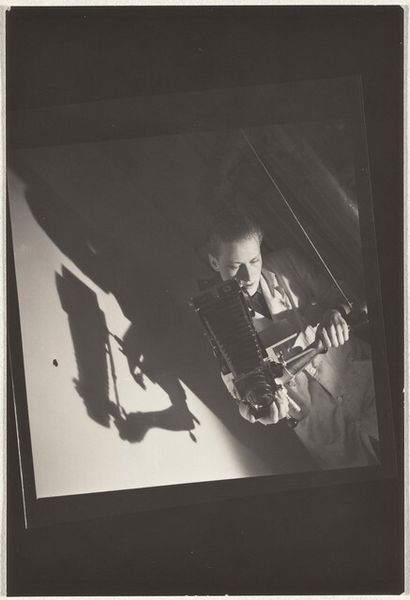
Pat Sabatine's Eleventh Birthday Party, Martins Creek, Pennsylvania 1980
0:00
0:00
photography, gelatin-silver-print
#
portrait
#
contemporary
#
wedding photograph
#
black and white photography
#
black and white format
#
warm monochrome
#
archive photography
#
photography
#
historical photography
#
black and white theme
#
black and white
#
gelatin-silver-print
#
monochrome photography
#
ashcan-school
#
monochrome
#
realism
Dimensions: image: 35.5 × 36.2 cm (14 × 14 1/4 in.) sheet: 50.8 × 40.64 cm (20 × 16 in.)
Copyright: National Gallery of Art: CC0 1.0
Editor: Larry Fink’s gelatin-silver print, "Pat Sabatine's Eleventh Birthday Party, Martins Creek, Pennsylvania," created in 1980, presents a man adjusting his cap in what seems to be a candid, almost intrusive manner. What draws my eye is how raw and unfiltered the image feels. It’s more than a portrait; it feels like a statement. How do you interpret this work in its socio-historical context? Curator: Well, this piece by Fink sits within a larger trend in documentary photography aiming to expose social realities. He, like many photographers of the time, was interested in capturing what was happening outside of the mainstream narrative. Editor: So, it’s a counter-narrative? Curator: In a sense, yes. The unvarnished quality—the stark lighting, the everyday setting—challenges idealized images. It speaks to the socio-political mood where authenticity and a focus on ordinary lives were gaining traction against more polished depictions. Do you notice how the informality lends it credibility, a kind of 'this is how things really are' feeling? Editor: Yes, the roughness makes it feel authentic and maybe a bit voyeuristic, too. What's interesting is that this photograph appears to capture a seemingly ordinary moment. The banality highlights a different type of "real." Is that a fair read? Curator: Exactly! Fink isn't presenting extraordinary events. He’s capturing everyday life, suggesting those moments, often overlooked, are worthy of attention. This piece can prompt viewers to consider how social and cultural norms shape their own perceptions of value and worth in the photographic canon. What is considered photo-worthy changes over time, doesn't it? Editor: I hadn’t considered that shift in terms of historical context before; that's something I'll definitely remember. Thanks! Curator: It's crucial to realize photography can offer powerful critiques and social commentaries by simply showing us different ways of viewing what is right in front of us.
Comments
No comments
Be the first to comment and join the conversation on the ultimate creative platform.
